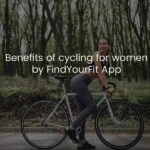Padel and Pickleball have become some of the most popular paddle sports worldwide. Despite having similarities, such as using paddles and being net-based, these games differ in their rules, strategies, and equipment. In this article, we’ll break down the key differences and similarities between Padel and Pickleball, helping you choose which sport suits your preferences.
1. Origins and History
Padel originated in Mexico in 1969, invented by Enrique Corcuera who merged elements of tennis and squash. The game is particularly popular in Spain, Latin America, and parts of Europe.
Pickleball, created in 1965 by Joel Pritchard, Bill Bell, and Barney McCallum, was a mix of badminton, tennis, and ping-pong. It quickly became popular in North America due to its simplicity and accessibility, and now enjoys growing popularity worldwide.
2. Equipment Comparison
Padel Gear
- Paddle: Solid, perforated, and short-handled, typically made from fiberglass or carbon fiber.
- Ball: Similar to a tennis ball but with lower pressure, resulting in a slower bounce.
- Court: Enclosed by glass or concrete walls, allowing the ball to rebound.
Pickleball Gear:
Paddle: Lightweight, larger than a ping-pong paddle, and made from materials like graphite or polymer.
Ball: A wiffle ball made from plastic, with holes for slower flight and controlled play.
Court: Open court, featuring a non-volley zone (“kitchen”) near the net.
Play Pickleball or Padel
3. Court Dimensions and Layout
Padel Court Dimensions:
Size: 20m x 10m (65.6ft x 32.8ft)
Walls: Enclosed by glass or concrete walls.
Net Height: 88cm at the center.
Pickleball Court Dimensions:
- Size: 13.4m x 6.1m (44ft x 20ft) for doubles.
- Surface: Typically hardcourt (asphalt or concrete).
- Net Height: 91.4cm at the sidelines, 86.4cm at the center.
4. Rules and Scoring
Padel Rules:
- Scoring: Follows tennis-style scoring (15, 30, 40, game).
- Serve: Must be underhand, landing diagonally in the opponent’s service box.
- Wall Play: Players can bounce the ball off the walls, adding a strategic layer.
Pickleball Rules:
- Scoring: Played to 11 points, win by 2 points.
- Serve: Underhand, must land diagonally, and avoid the non-volley zone (“kitchen”).
- Two-Bounce Rule: The ball must bounce once on each side before volleys are allowed.
5. Gameplay and Strategy
Padel Gameplay:
- Wall Integration: Players use the walls to extend rallies and create strategic angles.
- Team Coordination: Communication and positioning are crucial in doubles play.
- Lob Tactics: High lobs push opponents back, setting up smashes or drop shots.
Pickleball Gameplay:
- Dinking Duels: Soft shots into the kitchen create opportunities for mistakes.
- Third-Shot Drop: A soft shot to move closer to the net after the serve.
- Quick Reflexes: Volleys at the net require fast reactions, especially in advanced play.
6. Target Audience and Accessibility
Which Sport Is Right for You? Padel vs Pickleball
Padel: Best suited for players who enjoy strategic, high-intensity games with plenty of lateral movement. However, it requires specialized infrastructure, including enclosed courts.
Pickleball: More accessible and ideal for players of all ages and fitness levels, including beginners, families, and seniors. The sport requires minimal setup and can be played on improvised courts (like badminton or tennis courts).
Pros and Cons:
Padel:
Pros: High intensity, strategic, social.
Cons: Requires enclosed courts, less accessible.
Pickleball:
Pros: Low impact, easy to learn, widely accessible.
Cons: Can be less intense, might not appeal to tennis players.
7. Physical Requirements
Padel
Requires moderate to high intensity. The sport focuses on agility, leg strength, and cardiovascular endurance due to quick direction changes and wall-based play. Matches last 60 to 90 minutes.
Pickleball
Lower intensity, making it ideal for players of all ages and fitness levels. It’s particularly suitable for seniors or people recovering from injuries, with shorter matches averaging 15 to 25 minutes.
8. Popularity and Global Growth
Padel
Padel has exploded in popularity across Europe and Latin America, and it is steadily making its mark in India. While the sport’s presence in India is still growing, major cities like Mumbai, Delhi, Bengaluru, and Pune have already introduced Padel courts. Over the past few years, the number of Padel courts has increased significantly, with the sport gaining traction among players of all ages.
International organizations like the World Padel Tour and World Padel League have played a crucial role in promoting Padel in India, with the country hosts its first major Padel event in Mumbai in 2025. These global initiatives are contributing to the sport’s rise, attracting more local and international attention to the game.
Pickleball
Pickleball’s popularity is exploding, particularly in North America and now in India, where it’s becoming a common recreational sport. The All India Pickleball Association (AIPA) has been a leader in spreading the game by setting up school programs and national events. There are now more than 50,000 players across the country, with main hubs in Pune, Hyderabad, and Gujarat. India hosted the World Pickleball Championship (WPC) in Mumbai in November 2024, demonstrating the sport’s potential as a competitive and appealing sport.
9. Key Similarities Between Padel and Pickleball
Pickleball and padel are two different sports, but they have some things in common that make them popular all over the world:
- Both are paddle-based sports.
- Played across a net, requiring players to score by landing the ball in the opponent’s court.
- Both games emphasize strategy over power, particularly through the underhand serve.
- Doubles play is the most common format, promoting social interaction.
- Both sports are designed to be beginner-friendly, with smaller courts and slower-paced balls.
Conclusions
Padel and Pickleball offer different experiences. Padel is suited for those seeking a more intense, strategic game with wall play, while Pickleball provides a family-friendly, low-impact option suitable for players of all ages.
If you’re looking for a more challenging workout and enjoy the dynamic aspect of wall bounces, Padel is a great choice. However, if you want a fun, easy-to-learn game with minimal setup, Pickleball could be your best bet.
Both sports are on the rise in India, offering new opportunities for players to get involved in racket sports. Why not attempt both padel clubs growing and pickleball events exploding all around? Join India’s racket revolution in Delhi by grabbing a paddle, gathering with pals, and diving into the next major thing!




